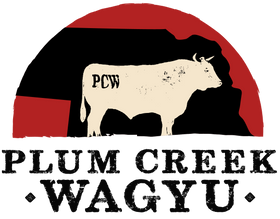How to Render Wagyu Fat and Use It in Your Cooking
Wagyu beef is prized for its rich marbling, but the benefits of this luxurious meat go beyond the steak itself. The high-quality fat found in Wagyu is packed with flavor and can be rendered into a versatile cooking ingredient. Whether you use it for frying, roasting, or finishing dishes, rendered Wagyu fat adds depth and richness to your favorite recipes. Here’s how to render it properly and make the most of every drop.
What Is Wagyu Fat?
Wagyu fat is softer and more buttery than regular beef fat due to its high levels of monounsaturated fats and oleic acid. This unique composition gives it a lower melting point, making it ideal for rendering and cooking.
How to Render Wagyu Fat
Rendering is the process of melting fat down into a liquid form that can be stored and used in cooking. Follow these simple steps to do it at home:
1. Collect the Fat
-
Trim excess fat from Wagyu steaks, roasts, or brisket.
-
Chop the fat into small pieces to help it melt evenly.
2. Heat Slowly
-
Place the fat in a heavy-bottomed pan or cast-iron skillet.
-
Cook over low heat to prevent burning, stirring occasionally.
-
As the fat melts, it will separate into a golden liquid with small crispy bits (cracklings).
3. Strain and Store
-
Once fully melted, strain the liquid fat through a fine-mesh sieve or cheesecloth to remove solids.
-
Store in an airtight jar or container in the fridge (lasts up to 3 months) or freezer (lasts up to a year).
Ways to Use Rendered Wagyu Fat in Cooking
Rendered Wagyu fat is a powerhouse ingredient that enhances flavor and texture in many dishes.
🔥 Frying & Sautéing – Use Wagyu fat instead of butter or oil for frying eggs, hash browns, or vegetables.
🔥 Roasting Meats & Veggies – Toss potatoes, carrots, or Brussels sprouts in Wagyu fat before roasting for a crispy, flavorful finish.
🔥 Making Wagyu Butter – Whip rendered fat with softened butter and fresh herbs for a rich finishing touch on steaks and bread.
🔥 Enhancing Sauces & Gravies – Stir into pan sauces or gravies for an extra boost of umami.
🔥 Cooking Rice & Pasta – Add a spoonful to rice or pasta for a luxurious depth of flavor.
Final Thoughts
Wagyu fat isn’t just a byproduct—it’s a culinary goldmine. By rendering and using it in your cooking, you can elevate everyday dishes with deep, beefy richness.
Looking for high-quality Wagyu? Order from Plum Creek Wagyu and experience the full flavor of premium beef—right down to the last drop of fat!
Related Posts
10 Quick and Easy Wagyu Beef Recipes for Busy Weeknights
From Ranch to Plate: Understanding the Wagyu Beef Supply Chain
Wagyu for Every Occasion: Perfect Cuts for Different Events
Sustainability in Wagyu Ranching: Our Commitment to the Environment
Pairing Wagyu with Local Nebraska Ingredients: A Farm-to-Table Experience
Nebraska is a state known for its rich agricultural heritage, offering a bountiful array of fresh produce, meats, and artisanal foods that reflect its commitment to high-quality, locally sourced ingredients. As a state deeply rooted in farming and ranching, it’s only natural that the exceptional Wagyu beef from Plum Creek Wagyu would pair perfectly with the best Nebraska has to offer.
In this post, we’ll explore how to combine the luxurious marbling of Wagyu with locally grown vegetables, grains, cheeses, and other unique ingredients to create a farm-to-table dining experience that celebrates both Nebraska’s culinary traditions and Wagyu's premium flavors.
A Beginner's Guide to Cooking Wagyu Beef at Home
Wagyu beef is a luxurious treat, known for its rich marbling, melt-in-your-mouth tenderness, and deep, savory flavor. Whether you’ve recently purchased your first Wagyu steak or you’re considering giving it a try, cooking this high-quality beef at home can be an exciting experience. In this beginner’s guide, we’ll offer simple recipes, helpful tips, and essential techniques to ensure you get the most out of your Wagyu beef purchase, making every meal a memorable occasion.








